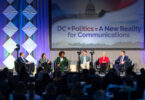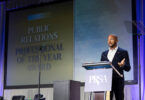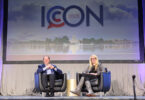Editor’s note: This is the 2nd in a series of guest posts from industry thought leaders predicting key trends that will impact the public relations industry in 2014. Hosted under the hashtag #PRin2014, the series began Jan. 8, 2014, with a compilation post previewing some of the predictions.
A few weeks ago, a senior media executive at one of the largest, most digitally savvy PR agencies shared with me a call he had with his top management in which they lamented the lack of media relations savvy from the firm’s younger professionals. “Shouldn’t there be more formal training,” they pressed, to which he replied that he’s already established a regular agency-wide communiqué with publicity-generating tips and contacts. The executive also suggested to his managers that perhaps the firm should lighten up on the external promotion of non-traditional means for building branded digital media footprints.
As we enter 2014, it’s easy to point to content marketing – earned, owned, paid and otherwise — as the direction in which the industry is headed. In fact, I personally called for agencies to embrace hybrid paid/owned and earned/owned content schemes in last year’s year-end post. More recently I wrote that the time was ripe for PR firms to further ratchet up their content marketing game by embracing some of the sophisticated new algorithms and A/B testing schemes that enhance the likelihood of a viewer clicking on and/or sharing a piece of client content. The industry also has access to data-driven mechanisms that tell whether exposure to a marketing-driven message eventually led to a sales transaction.
In last year’s post, I worried that firms and practitioners who rely solely on the benevolence of journalists to advance theirs clients’ communications interests may eventually be left behind. There are just too many avenues from which consumers today take their news and information, starting with Twitter, Facebook and Instagram. Even so, a great “placement” (I hate that term) in an influential media outlet like Bloomberg, The Journal, Mashable, and CNNMoney or on The AP wire retains an uncanny capacity to set Twitter tongues-a-wagging.
It is for this reason that earned media, i.e., the successful engagement of a journalist that results in editorial coverage, will remain very much a core industry offering in 2014. As much as has changed, my clients continue to want to see their product, service or point-of-view reported in the “media.”
This reality is not lost on the vast majority of agencies. I can’t tell you how many requests I receive from some of the most forward-thinking (and sounding) shops for help finding them solid media relations pros. One look at any PR job board will reveal that media relations remains the single-most sought-after competency by agencies of all stripes and most in-house communications departments.
There’s nothing like a seasoned PR pro who understands how to navigate (and have empathy for) the most sought-after reporters, bloggers and TV producers. Yet, the competition for these journalists’ limited bandwidth is as fierce as it’s been in my three decades plying the PR trade. In fact, I would guess that fewer than one in a hundred PR pitches actually succeed in producing coverage. (Not for my clients, of course.)
It seems that consumers are not alone in taking their news and info from non-traditional sources. Journalists too have self-selected the sources on whom they rely for real-time story ideas. As a result, they have grown less beholden to PR professionals. (This of course varies from industry to industry and from agency to in-house.)
Nonetheless, in 2014, for better or worse, media coverage (that makes a difference) will continue to be the primary measure by which the vast majority of agencies are largely compensated and for which industry awards are handed out.
Once we accept this reality, we simply must do a better job to inculcate those new to the profession in the workings of the modern media organization and those within it responsible for producing editorial content. There is no reason for our industry to constantly take it on the chin en masse, as was the case recently when The New York Times’s resident Haggler David Segal groused about the propagation of PR spam.
In “Swatting at a Swarm of Public Relations Spam,” Segal in effect sums up the sorry state of the once symbiotic journalist-PR relationship:
“This is an unsolicited public relations pitch — P.R. spam, more succinctly — one of hundreds of thousands that belly-flop into the email systems of journalists every day…suddenly the Haggler noticed that P.R. spam started showing up the way flying monkeys appear in ‘The Wizard of Oz.’ Swarms landed each day, imploring the Haggler to write about Christmas Cookie Treat Boxes, or a document previewer called Igloo, or a liquor called Pura Vida Tequila, which ‘will be in the house this season at Qualcomm Stadium.’ Woo-hoo.”
The reasons for the explosion in PR spam in journalists’ inboxes – and the resulting disdain journalists have for PR people — has much to do with the blind trust many PR practitioners put in the media database and distribution companies. These companies have “empowered” PR people to build and contact scores of journalists instantly with just a few keystrokes. Sadly, many PR pros neglect to fully vet these so-called “target” media lists. The result: misguided PR spam, and PO’d reporters on the receiving end.
It’s one thing to send the wrong reporter a misguided story idea, and something entirely different in sending the right reporter a story idea that simply isn’t one. Many PR pros neglect to probe their clients for the superlatives needed to constitute a viable story, i.e., the first, largest, only. Where’s the news hook or trend? If no natural hook exists, then use your creative juices to develop one. Too many marginal pitches land in reporters’ inboxes only to be ignored, or worse, prompting the hated “follow-up call.”
Finally, and perhaps most importantly, we’re seeing a remarkable lack of quality writing from the PR profession. Back in the day, it was almost a pre-requisite for a PR professional to have some grounding in journalism. Today, not so much, except for those who’ve come over to “the dark side” in a “content marketing” capacity, e.g., Director of Content. Few of these former journalists are crafting “pitch” letters aimed at convincing reporters of the editorial merits of their client’s product or service. That work is traditionally pushed down to junior agency staffers (yes, even today), often with little oversight. Many of these pitches contain overused phrases and bloated prose that sounds hollow. To give you a sense, here’s a link to Digiday editor Brian Morrissey’s “25 PR Habits That Drive Reporters Nuts”
If we could fix these shortcomings in 2014, it would go a long way toward revitalizing the practice of media relations, and in so doing, the value PR professionals offer to journalists.
With that said, we must be mindful that a great “placement” in and of itself no longer has the capacity to drive a contemporary communications campaign. Stand-alone news stories are simply too ephemeral or lost altogether in the vast ocean of dynamic content. For a story meme to take hold today, it must reside and be amplified across multiple news and social channels even if that means using alternative (e.g., sponsored) means for achieving it.
Peter Himler is principal of Flatiron Communications LLC, a New York City-based PR and digital media consulting firm that helps established and emerging companies capitalize on the latest tools and strategies to build a presence in the media, and by so doing, advance their business objectives. Over his career, he held senior media relations positions at Edelman, Burson-Marsteller, Cohn & Wolfe and Hill & Knowlton.







I worked as sports information director at Calvin College for some 10 years and then was director of media relations for almost 15 years. What many people either don’t understand, or don’t want to deal with, is that media relations done well is hard, hard work. There’s the identifying relationships part of it and then the establishing and maintaining relationships. That takes a ton of time done right. There’s the boundary spanning role: knowing your org and knowing the media world and bringing the two together in appropriate ways. There’s the huge turnover in media which makes relationship building a constant process. But, when done well, I think media relations can be one of PR’s most satisfying subsets. I used to love the thrill of seeing Calvin covered in local, state and national media, and I still remember how irritated I would get when one of our competitors would get covered! These days earned media coverage, of course, also allows us to jumpstart some of the other communication we might do as an org with key stakeholders. The ability to pass on or curate earned media coverage adds an authenticity and legitimacy to our own comm efforts that is hard to beat. Thanks for a thought-provoking article.
[…] Media Relations is Dead. Long Live Media Relations. […]
[…] search for their previous content to see if they cover your topic. Trust me – it’s worth it. Peter Himler, principal of Flatiron Communications LLC, states that it has much “to do with the blind trust […]
[…] what about media relations? Last week our friend Peter Himler penned a PRSA op-ed on the subject, and it’s well worth a […]
[…] what about media relations? Last week our friend Peter Himler penned a PRSA op-ed on the subject, and it’s well worth a […]
Peter, I have to say I found your article uplifting and encouraging. I have been in PR for about 25 years and prior to that worked as a news reporter in New York. In the past few years as a public relations business owner, I have seen a lot of changes in the way clients view media relations. Over the past couple of years, I have seen the emergence of branded journalism and owned content in which companies are using trade publications to distribute white papers, webinars and other news to their targeted audience. It is getting harder and harder to place stories in these publications, as they discover ways to monetize these content opportunities.
As you mention in your article, I think the wave of the future will be a mix of earned and owned media, especially as more companies use marketing automation to generate business leads. For example, one of our clients is celebrating its 95th anniversary and they are really not that interested in media placements. What they want the press release lede to say is that in appreciation of their customers, they are offering a sales event. When we told them this is more of an advertisement than a news story, and that they probably wouldn’t get coverage on this angle, they didn’t seem concerned. They want to use this in their content marketing campaigns and website to generate interest and attract customers.
Another potential client said they chose a particular PR firm for their business because they were less interested in “traditional PR” (read media relations) and more interested in marketing and ways to leverage their marketing automation programs.
This is why I think it behooves PR people to understand marketing automation programs like Marketo and Pardot so they can offer additional services to their clients, not just media relations.
Perhaps enterprise companies still want traditional (and social) media relations, but I am noticing that startups and smaller companies want more marketing and sales support services.
That being said, I am encouraged to read that traditional media relations still matters, as I light up when I score a placement for my client.